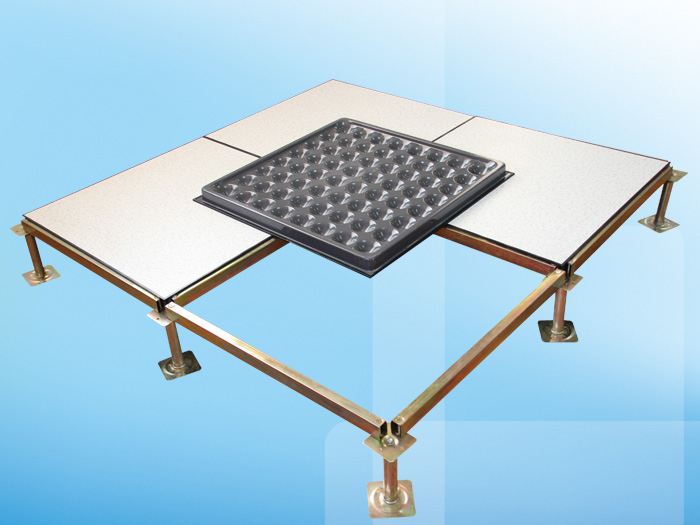Let's take a look at what is anti-static access floor
The anti-static access floor is an elevated or "elevated" floor area on another floor (usually a concrete slab in a building), which creates interstitial spaces for service allocation. It consists of modular floors, which are designed to be detachable from their supports for quick and easy completion of services.These services may include, but are not limited to, electricity, data, pipelines, telecommunications, environmental control, air conditioning, fire detection suppression, safety, etc., anti-static floor maintenance: in terms of floor maintenance, air leakage refers to the air from below the floor The cavity passes through the passage of components other than the designed air outlet installation.
Leakage is usually divided into two categories: due to the quality of the building, the air cavity under the floor leaks; leaks through floor joints and other non-air outlet equipment, vertical load of the anti-static floor: vertical load (or force), and its line of action passes through The center of the cross section of the component is perpendicular to the plane of the section, so there is no bending or changing moment.

This refers to the load that is usually specified when inspecting the axial load performance of the anti-static access floor base support. Deformation of anti-static floor: Deformation is defined as the behavior of deforming or changing the shape or size of structural elements or the main body due to force or stress. The beam deformation related to the anti-static access floor usually refers to the permanent deformation of the entire span of the access floor after rolling load is applied.




 CopyRight © 2024 - Changzhou Huateng Access Floor Co., LTDAll rights reserved
CopyRight © 2024 - Changzhou Huateng Access Floor Co., LTDAll rights reserved
